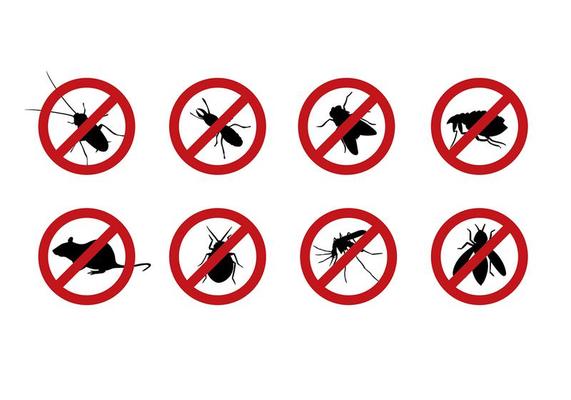Bed Insect Treatment Failure: Comparing Chemical Vs. Non-Chemical Solutions
In the world of bug control, especially when taking care of the persistent concern of bed bugs, the choice between chemical and non-chemical treatment options can be a critical one. Both approaches provide distinctive benefits and drawbacks, influencing factors such as effectiveness, safety and security factors to consider, and overall expense. By checking out the nuanced information of each method, a clearer understanding of which path to go after in attending to a bed insect problem can be achieved.
Efficiency of Chemical Treatments
Chemical therapies for bed pest problems have actually been extensively identified for their rapid and powerful efficacy in removing these parasites. When taking into consideration the effectiveness of chemical therapies, it is essential to comprehend that they can give a quick and detailed service to a bed pest trouble. Professional pest control operators usually rely upon pesticides to target bed pests at various phases of their life process, including grownups, nymphs, and eggs. These chemicals commonly function by disrupting the bed insects' nerve system, bring about paralysis and ultimate fatality.
Additionally, chemical therapies have the benefit of using residual results, suggesting that they can proceed to remove bed pests even after the initial application. This recurring activity is particularly useful in combating any type of potential re-infestations. In addition, the rapid action of chemical treatments can bring relief to individuals facing extreme bed pest infestations, enabling them to reclaim control of their space quickly.
Security Interest In Chemical Solutions
When using chemical solutions for bed pest therapy is making certain the safety and security of occupants and the environment,One vital facet that requires careful factor to consider. While chemical treatments can be efficient in eradicating bed insects, they may present threats otherwise handled correctly. One of the main safety and security worries with chemical solutions is the potential injury they can trigger to human wellness. Direct exposure to particular chemicals utilized in bed insect treatments can result in breathing problems, skin irritation, or various other damaging reactions, specifically in individuals with pre-existing conditions or level of sensitivities. In addition, inappropriate application or dose of chemical pesticides can result in toxic deposits remaining in the treated area, posturing long-lasting health dangers to occupants.
Additionally, the environmental influence of chemical solutions is an additional considerable consideration. Some chemicals made use of in bed insect therapies might be unsafe to valuable bugs, wild animals, and environments if they seep into the soil or water supply. It is vital to use chemical treatments judiciously, adhering to security standards, and considering less poisonous alternatives to minimize these dangers and make certain the safe and efficient monitoring of bed bug infestations.
Benefits of Non-Chemical Techniques
Taking into consideration the prospective security problems and ecological impact related to chemical remedies for bed bug treatment, checking out non-chemical approaches presents an appealing alternative with several distinctive benefits. Non-chemical methods provide a much safer choice for families, specifically those with children, pets, or individuals sensitive to rough chemicals. These strategies remove the threats of direct exposure to toxic materials, lowering the possibility for damaging health and wellness results. Additionally, non-chemical treatments are environmentally pleasant, as they do not add to air or water pollution, making them a lasting option for insect control.
Additionally, non-chemical remedies can be efficient in targeting bed bugs, including hard-to-reach areas where chemical treatments may not permeate - A1 charlotte pest control companies. Methods such as warmth treatment, vacuuming, vapor cleaning, and mattress encasements give comprehensive obliteration without the usage of harmful chemicals.
Limitations of Non-Chemical Treatments

Additionally, non-chemical therapies often need numerous applications to achieve successful eradication. This can be time-consuming and may not constantly assure complete elimination of all bed pests and their eggs, especially in hard-to-reach or surprise places.
Furthermore, the success of non-chemical therapies greatly counts on proper application and thoroughness, which can be challenging for people without professional expertise. Insufficient application of non-chemical approaches might lead to incomplete elimination, bring about persistent infestations and the demand for additional treatments.
For that reason, while non-chemical therapies have their benefits, it is important to recognize these constraints and consider them when identifying the most effective strategy for managing bed bug infestations.
Expense Comparison: Chemical Vs. Non-Chemical Options
Offered the constraints associated with non-chemical therapies, a vital element to examine in the context of bed bug administration is the cost comparison in between chemical and non-chemical choices. In comparison, non-chemical treatments like warm therapy or heavy steam can be extra expensive, with expenses varying from $1,000 to $6,000 for an entire home. While the first expense of chemical therapies might seem lower, numerous treatments might be called for to fully remove the problem, possibly increasing the general price.
Verdict

Considering the prospective safety and security issues and ecological influence associated with chemical services for bed pest treatment, checking out non-chemical techniques offers a promising alternative with a number of distinctive advantages.Provided the constraints associated with non-chemical therapies, an important element to evaluate in the context of bed bug administration is the price contrast in between chemical and non-chemical options. In contrast, non-chemical treatments like warm therapy or steam can be a lot more pricey, with prices varying from $1,000 to address $6,000 for an entire home. While the initial expense of chemical treatments might seem lower, multiple therapies might be needed to click this link completely eradicate the infestation, potentially enhancing the general price.In conclusion, when comparing chemical and non-chemical bed bug therapy choices, it is important to think about efficiency, security, benefits, limitations, and cost.